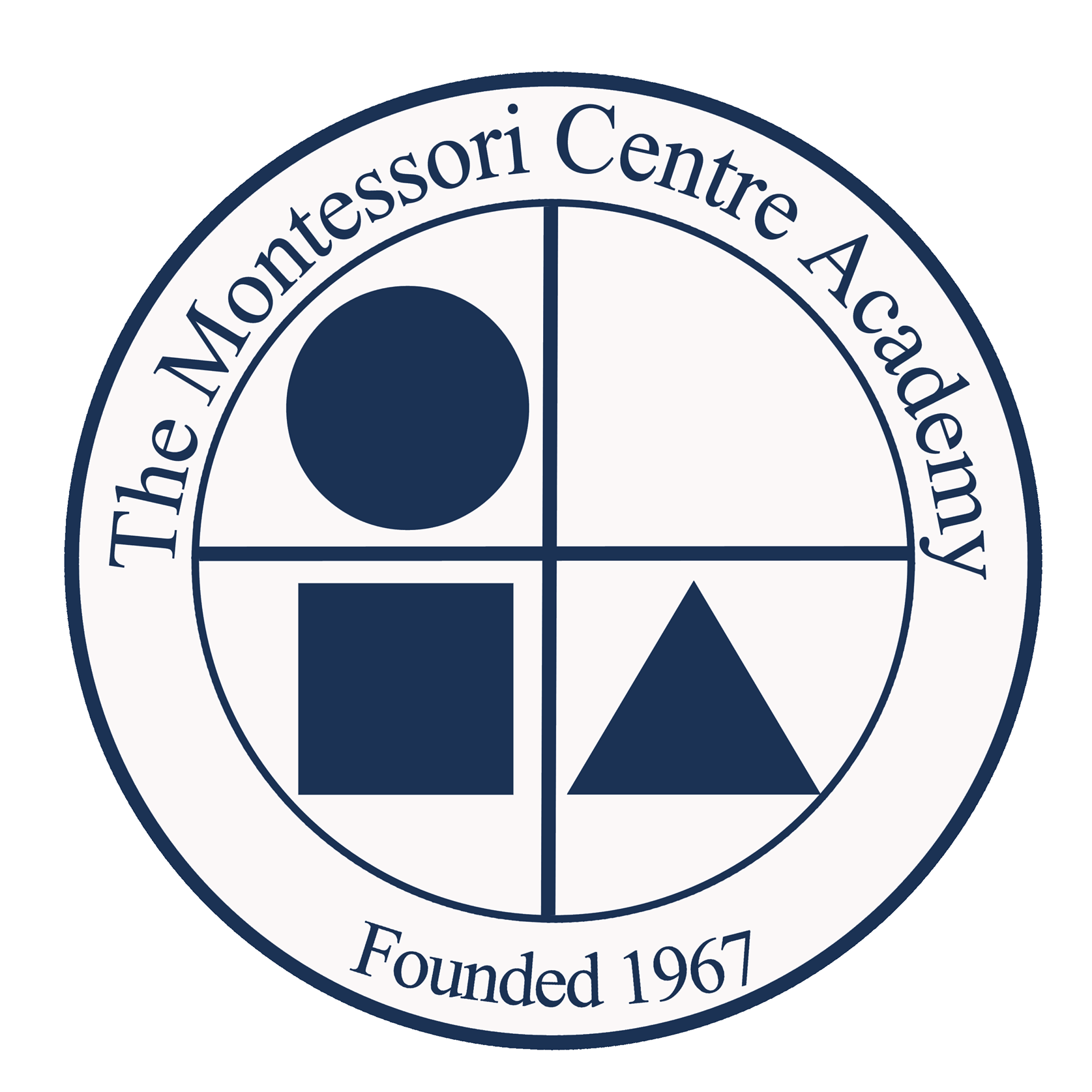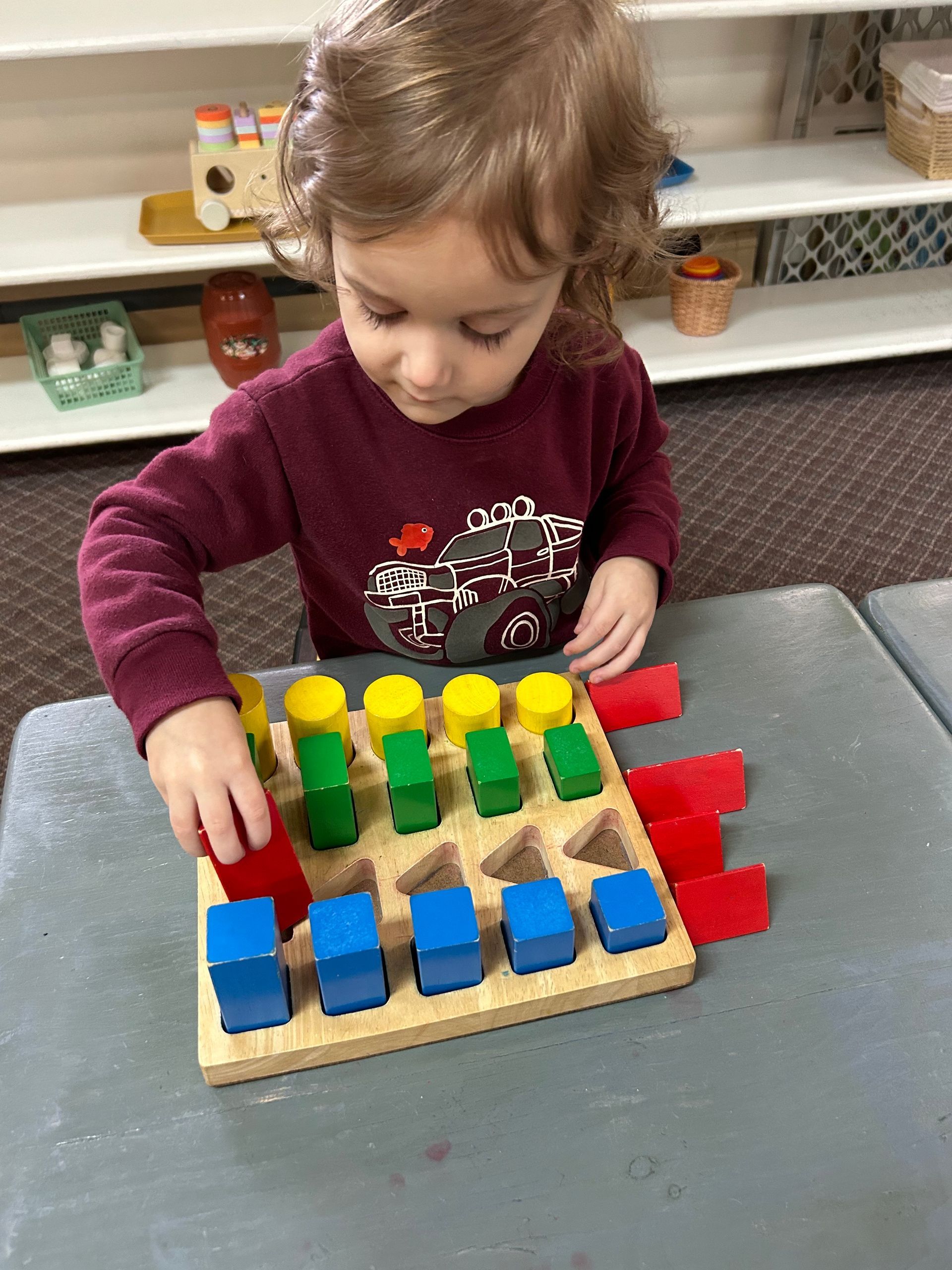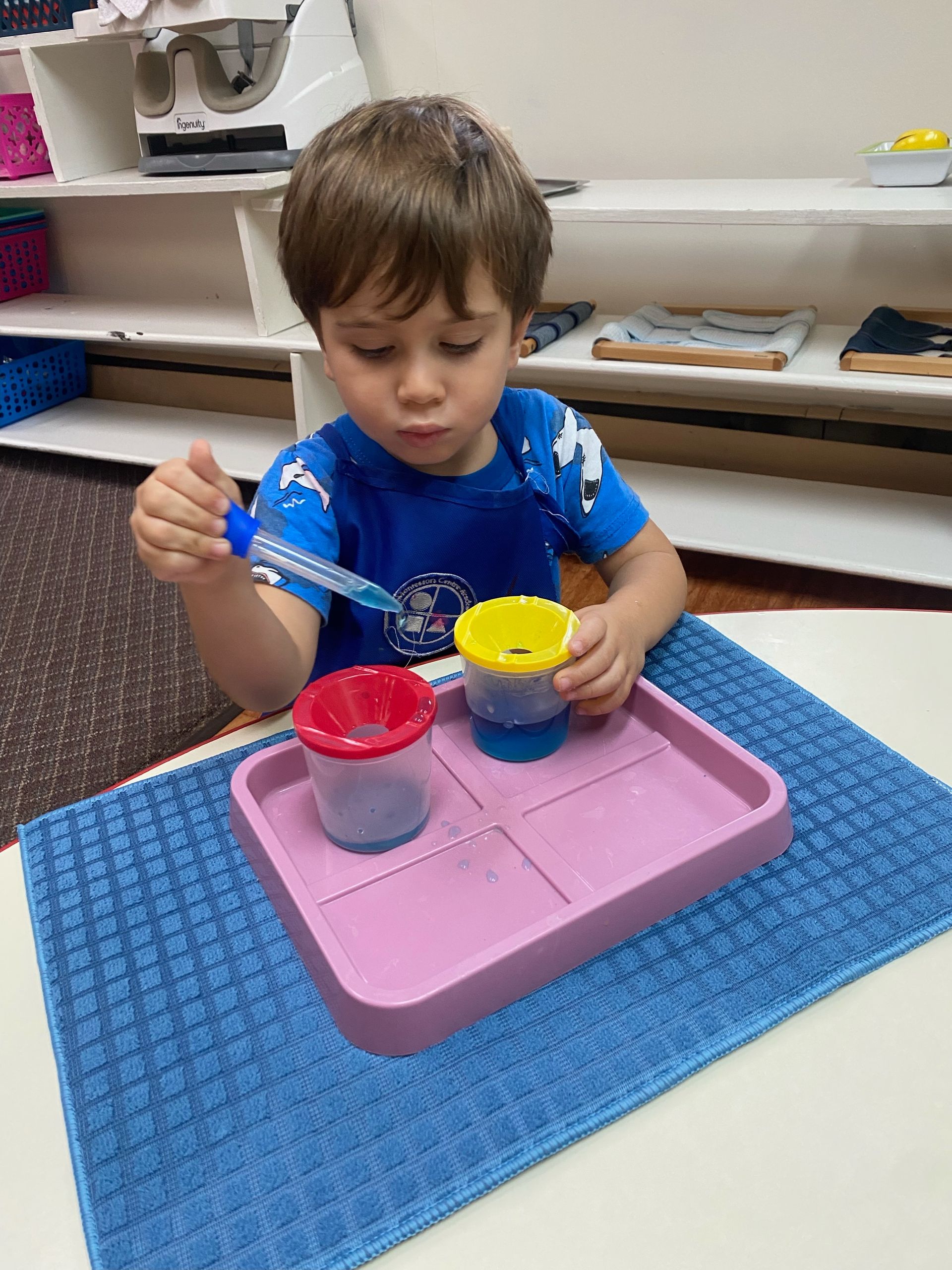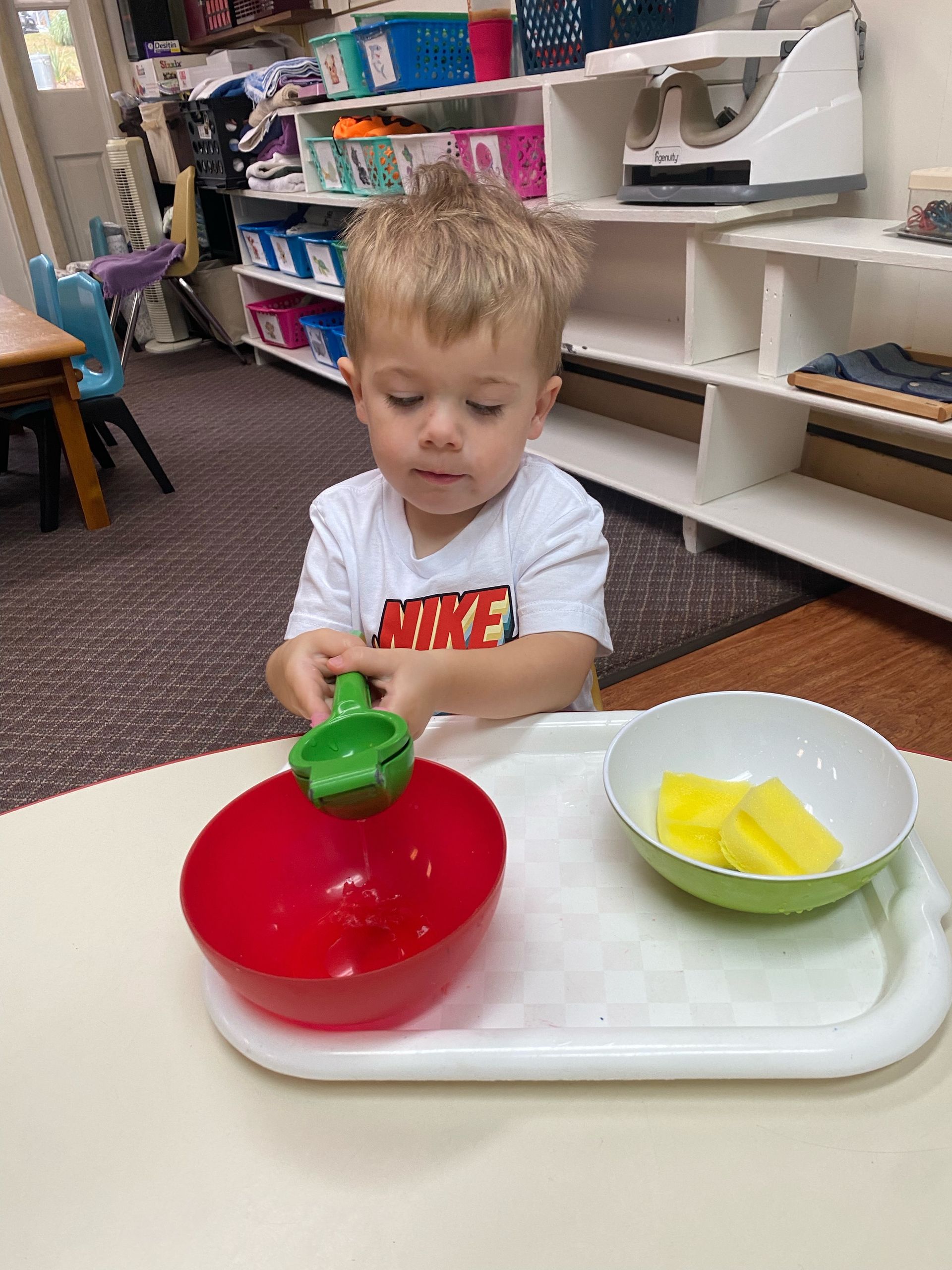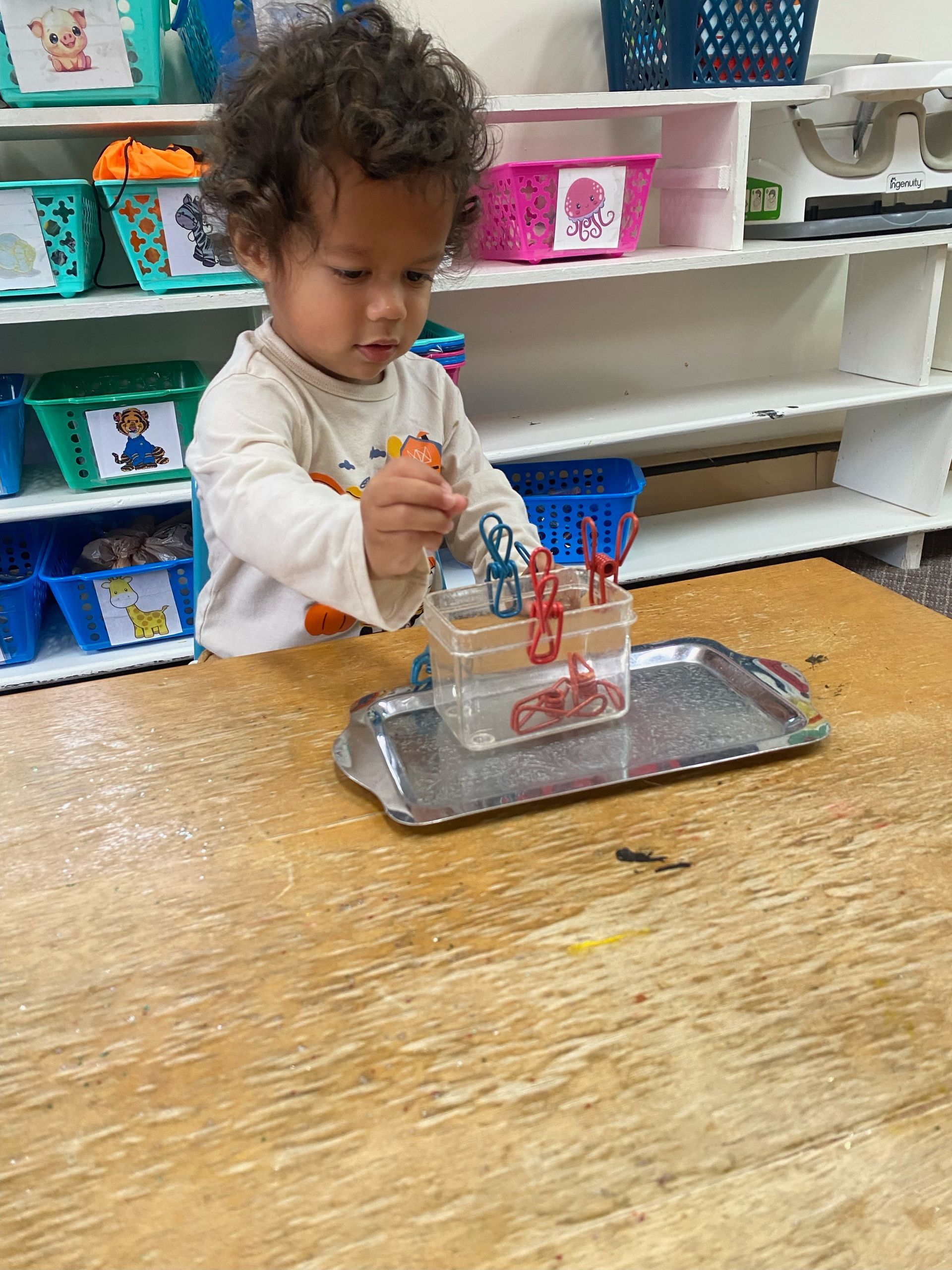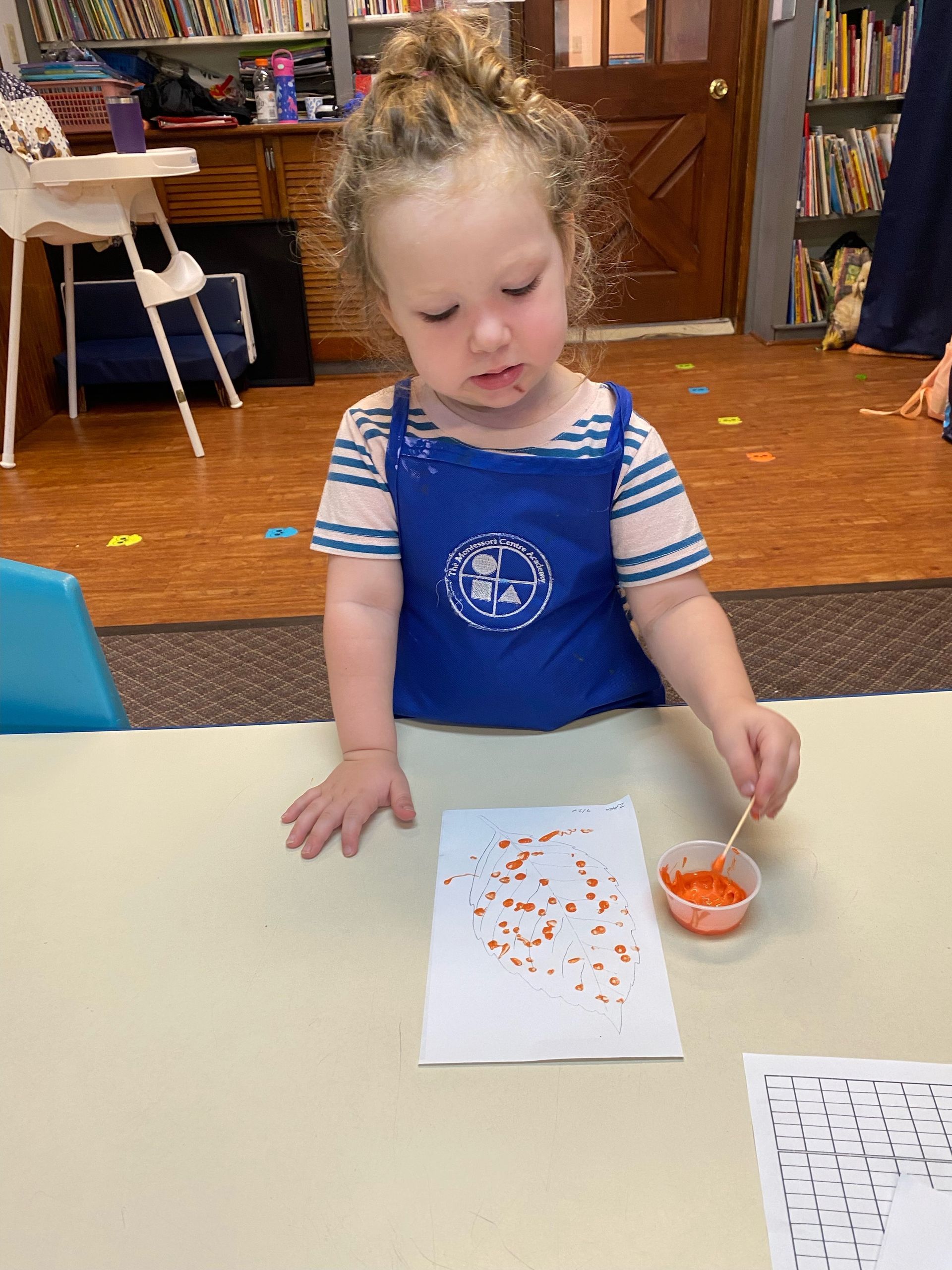Early Childhood Education

The toddler classroom is thoughtfully prepared to support each child’s need for purposeful activity that aligns with their developmental stage. It includes a variety of Montessori materials such as sandpaper letters for sound recognition, sandpaper numbers, and sensorial equipment, as well as engaging toys and manipulatives
designed to promote early learning and exploration.
A key area of the Montessori environment is called Practical Life. This area introduces children to real-life activities that foster independence, concentration, and coordination. Practical Life activities include pouring, scrubbing, polishing, and the use of dressing frames for zipping, buttoning, and snapping—all of which help build fine motor skills and self-care abilities.
Slide title
Write your caption hereButtonSlide title
Write your caption hereButtonSlide title
Write your caption hereButtonSlide title
Write your caption hereButtonSlide title
Write your caption hereButtonSlide title
Write your caption hereButtonSlide title
Write your caption hereButtonSlide title
Write your caption hereButton
The goal of the toddler program is to lay the foundation for organizational skills, independent
thinking, and a sense of freedom
in choosing meaningful work. The teacher observes each child closely, gently guiding them toward activities that support their individual growth and interests.
Early Childhood Education
The toddler classroom is thoughtfully prepared
to support each child’s need for purposeful activity that aligns with their developmental stage. It includes a variety of Montessori materials such as sandpaper letters for sound recognition, sandpaper numbers, and sensorial equipment, as well as engaging toys and manipulatives
designed to promote early learning and exploration.
A key area of the Montessori environment is called Practical Life. This area introduces children to real-life activities that foster independence, concentration, and coordination. Practical Life activities include pouring, scrubbing, polishing, and the use of dressing frames for zipping, buttoning, and snapping—all of which help build fine motor skills and self-care abilities.
Slide title
Write your caption hereButtonSlide title
Write your caption hereButtonSlide title
Write your caption hereButtonSlide title
Write your caption hereButtonSlide title
Write your caption hereButtonSlide title
Write your caption hereButtonSlide title
Write your caption hereButtonSlide title
Write your caption hereButton
The goal of the toddler program is to lay the foundation for organizational skills, independent thinking, and a sense of freedom
in choosing meaningful work. The teacher observes each child closely, gently guiding them toward activities that support their individual growth and interests.
Toddler (2 years to 3 years)-
2-day, 3-day, or 5-day schedules available

*Classes are from 8:30 AM- 11:15 AM
Classes introduce children to the Montessori philosophy and help them to become more independent. Parents learn how to carry over the Montessori philosophy into the home.
*Our toddler program begins at 24 months of age. If a child's 3rd birthday is prior to the cutoff date of September 1st of that same school year, they are placed in our Primary program as a Half-Day student.
*Our toddler program begins at 24 months of age. If a child's 3rd birthday is prior to the cutoff date of September 1st of that same school year, they are placed in our Primary program as a Half-Day student.
